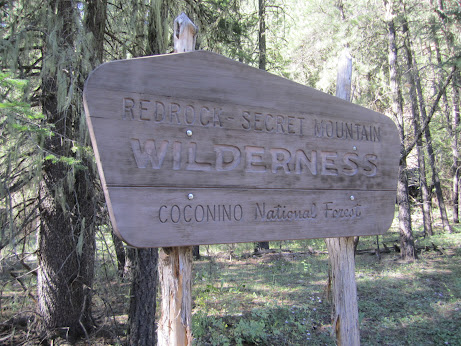Once students have completed the academy, including two Incident Command System tests, they'll be added to the call-out list and be eligible to respond to missions.
Sadly, as we welcome new members to the Coconino County Sheriff's Search and Rescue team, we're also mourning the loss of another, a four-legged team member named Nitro. Nitro, whose nickname was Peedles, was the oldest and most experienced of handler Cindy McArthur's four SAR dogs, and he did his job enthusiastically and with energy till the day before he suddenly succumbed to previously undetected liver cancer earlier this month. Nitro was 10 years old.
A NASAR-certified search dog cross-trained in area search (for live subjects) and HRD (human remains detection), Nitro had three live finds and three HR finds on missions during his career and countless other successful finds during trainings as often as three times per week.
Among his mission finds were a teen on the autism spectrum; an 83-year-old man with dementia who'd been missing for more than 40 hours; the verified location of the scent of human remains in a closet three years after the body had been removed, which led to the killer's arrest; and the location of eigh human bones buried in a pack rat's nest. Earlier this year, Nitro located two lost hikers in the San Francisco Peaks and also found a smear of blood on a pair of pants inside a locked trunk, later determined to be human blood through the use of Luminal by the Coconino Sheriff's Office CSI Team.
Nitro received the 2005 Search & Rescue Dog of the Year award from the Association of Pet Dog Trainers and, in the same year, the Kingman Police Department Excellence Award for assistance in a homicide case, which he shared with Radar, another of Cindy's search dogs. Nitro also received the Good Gun Foundation Award for Search Dog Unit in 2007.
As Cindy said, "[Nitro] was the best SAR dog any handler could dream for, and I will miss him dearly. Our SAR unit has lost one of it's most dedicated members."
Having worked with Nitro as Cindy's backer and also as a lost subject for her dogs, I too will miss sweet, loyal Nitro.
A DPS Pilot since 2006, Matthew Uhl operated the Bell 407 Ranger Air Rescue and was assigned to the DPS Central Air Rescue Unit in Phoenix. At the time of his death, he was en route to cover a shift in Kingman as part of the DPS Western Air Rescue.
On February 20, 2010, Matt Uhl and DPS Officer/Paramedic Eric Tarr rescued three-year-old Victoria Bensch who had been missing for nearly 15 hours after she wandered away from her Cordes Lakes home.
Uhl was also the pilot who flew the short-haul rescue of the severely injured canyoneer in Insomnia Canyon on August 13th that our team participated in. He will be sorely missed.
See DPS Pilot, Two Others, Killed in Head-On Car Wreck




































